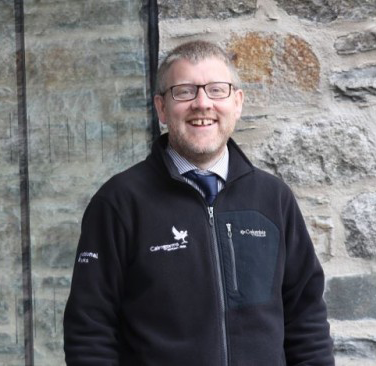Maximising the benefits of green finance in the Cairngorms
Addressing the climate and nature crisis are both key elements of the draft National Park Partnership Plan which we published on 23 September. These are issues we have to work on in the here and now, but also must involve sustained resource commitment over the long term to meet our 2045 targets.
The Cairngorms National Park Authority has been working closely with a range of partners on peatland restoration, woodland expansion, river restoration and biodiversity projects over many years. In the Park, this has led to 2,172 hectares of restored peatland since 2014 and 4,475 ha of woodland expansion since 2016, but we know these efforts will need to be stepped up if we are going to address the nature and climate crisis.
The scale of the challenge is huge: for instance, there are around 3 million hectares of peatland in the UK and much of this has been damaged by human activities. Much of this peat is no longer actively sequestering carbon and is instead emitting carbon every single year. To respond to this challenge, the Scottish Government has set a target of restoring over 20,000 hectares of peat every year.
The use of private finance to help address these issues can potentially have a huge positive impact on delivering the nature outcomes we all want within a timescale that helps us meet our 2045 targets. However, we also need to make sure that the way that carbon and other markets develop benefit local communities and land managers, and also deliver multiple benefits around employment and business diversification opportunities.
The National Parks in the UK have been working with Palladium to pilot different models across the National Parks to help deliver private finance within a social and ethical framework. This week sees the launch of the UK National Parks’ ‘Net Zero with Nature’ finance initiative – ‘Revere’, with one of the founding partners being Santander UK. As part of the initiative, we will be working with Palladium and Santander UK on a peatland restoration project that aims to reduce emissions, provide a long-term income stream for the land manager and have a community funding benefit associated with it.
We are also looking at how long-term private finance at scale can help bolster supply chains and secure good, long-term green jobs. This will involve skills training and enhancing business capacity, something that will be crucial if we are going to deliver a just transition with jobs and economic opportunities for rural Scotland.
There has been a lot of discussion about land purchases for nature restoration or carbon management recently. Within the Cairngorms National Park, we have seen two areas of land purchased over the past few months with carbon management in mind and this is definitely an issue we will be exploring as part of the National Park Partnership Plan consultation process.
Importantly though, the work we are doing in the Cairngorms with Palladium is a different approach. It is not about buying land, nor is it a straightforward carbon brokerage model. It is about working with land managers in the Park to provide the capital to undertake restoration work and deliver climate and biodiversity targets, whilst providing long-term revenue streams supporting rural businesses and local communities.
As part of our work on the Cairngorms 2030 project, we will be trialling a number of different approaches to see what works and how we can maximise benefits for all over the next two years. There is an exciting opportunity for the Cairngorms National Park to lead the way in identifying solutions that benefit a wide range of interests, where the public and private sectors work closely together.
Private finance is not a panacea. We need to ensure benefits are evenly spread and help to deliver land use integration that supports multiple outcomes. There is much to learn and to trial, but we also need to crack this issue if we are to deliver a net zero and nature-rich future.
